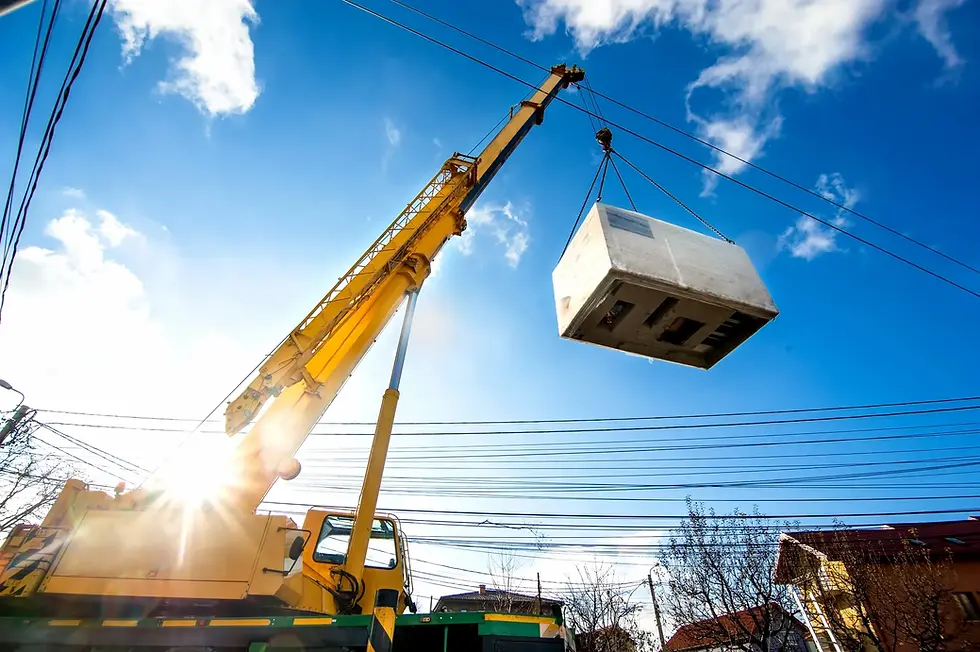What To Consider When Hiring A Crane
- Macsalvors Crane Hire
- Feb 18
- 3 min read

Hiring the right crane for your project is a critical decision that can affect the success and safety of your work. Whether you're lifting heavy loads on a construction site or carrying out more specialised tasks, selecting the correct crane is essential.
At Macsalvors Plant Hire, we provide a range of crane hire options across Cornwall and Devon, including all-terrain cranes and HIAB cranes.
Here are key considerations to keep in mind when hiring a crane for your project.
Type of Crane You Need
Choosing the right type of crane is one of the most important factors when it comes to crane hire. Different projects require different equipment, and the type of crane will depend on the nature of the job. For example, you might need:
● All-Terrain Cranes: These cranes are designed for use both on-road and off-road, making them perfect for projects in areas with difficult terrain. If you're working in construction sites, quarries, or areas with rough ground, an all-terrain crane will be the best option for mobility and stability.
● HIAB Cranes: If your project involves lifting and moving heavy goods over short distances, a HIAB crane might be the ideal choice. These trucks come with a built-in crane, offering flexibility and ease of use for site logistics, especially for offloading and delivering materials.
Understanding your project's specific needs will help you determine which crane type will be most efficient.
Weight and Size of the Load
When hiring a crane, you need to consider the weight and size of the loads that will be lifted. Different cranes have varying lifting capacities, so it’s essential to choose a crane that can safely manage the weight of your load.
At Macsalvors Plant Hire, our all-terrain cranes and HIAB cranes are equipped with different lifting capacities to suit a wide range of needs. If you're lifting heavy equipment or large materials, be sure to select a crane with sufficient load capacity to avoid overloading, which could cause accidents or delays.
Site Conditions
The conditions of the site where the crane will be operating are critical when choosing the right crane. If you're working in a confined or tight space, a smaller crane or a spider crane may be more appropriate. For outdoor sites with uneven terrain or areas that are hard to reach, an all terrain crane provides the necessary stability and range of movement.
Ensure that you have a good understanding of your site's layout, including obstacles like buildings, power lines, or other structures that may impact the crane's operation.
Duration of Hire
The length of time you need the crane will influence both the cost and logistics of your hire. At Macsalvors Plant Hire, we offer flexible crane hire solutions that can be tailored to your project’s specific duration. Whether it's a short-term project or a long-term operation, we can accommodate your needs.
It’s important to discuss your project timeline in advance to ensure the crane you need is available for the full duration of your work, avoiding any disruption.
Expertise and Support
When hiring a crane, it’s vital to choose a provider that offers not just equipment, but also expert guidance and support. At Macsalvors, we have a team of experienced professionals who can help you select the right crane and offer advice on safe operations. We also provide delivery, setup, and ongoing support throughout the hire period.
Hire the Right Crane for Your Project
Hiring the right crane for your project ensures efficiency, safety, and cost-effectiveness. At Macsalvors Plant Hire, we offer a range of crane hire options, including all-terrain cranes and HIAB cranes, to suit a variety of needs across Cornwall and Devon.
Get in touch with us today to discuss your crane hire requirements and find the ideal solution for your project!






Comments